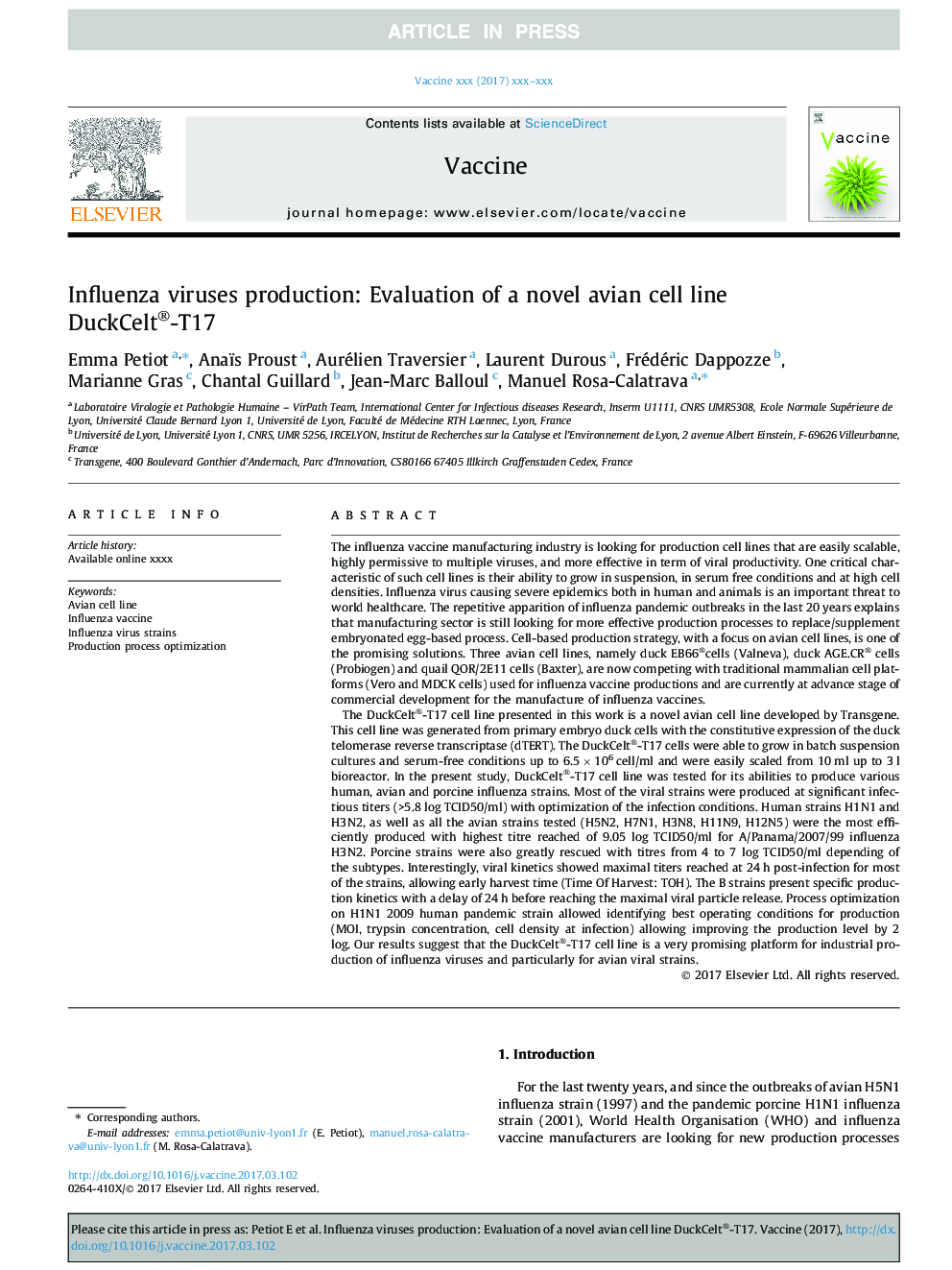| Article ID | Journal | Published Year | Pages | File Type |
|---|---|---|---|---|
| 8485669 | Vaccine | 2018 | 11 Pages |
Abstract
The DuckCelt®-T17 cell line presented in this work is a novel avian cell line developed by Transgene. This cell line was generated from primary embryo duck cells with the constitutive expression of the duck telomerase reverse transcriptase (dTERT). The DuckCelt®-T17 cells were able to grow in batch suspension cultures and serum-free conditions up to 6.5Â ÃÂ 106Â cell/ml and were easily scaled from 10Â ml up to 3Â l bioreactor. In the present study, DuckCelt®-T17 cell line was tested for its abilities to produce various human, avian and porcine influenza strains. Most of the viral strains were produced at significant infectious titers (>5.8 log TCID50/ml) with optimization of the infection conditions. Human strains H1N1 and H3N2, as well as all the avian strains tested (H5N2, H7N1, H3N8, H11N9, H12N5) were the most efficiently produced with highest titre reached of 9.05 log TCID50/ml for A/Panama/2007/99 influenza H3N2. Porcine strains were also greatly rescued with titres from 4 to 7 log TCID50/ml depending of the subtypes. Interestingly, viral kinetics showed maximal titers reached at 24Â h post-infection for most of the strains, allowing early harvest time (Time Of Harvest: TOH). The B strains present specific production kinetics with a delay of 24Â h before reaching the maximal viral particle release. Process optimization on H1N1 2009 human pandemic strain allowed identifying best operating conditions for production (MOI, trypsin concentration, cell density at infection) allowing improving the production level by 2 log. Our results suggest that the DuckCelt®-T17 cell line is a very promising platform for industrial production of influenza viruses and particularly for avian viral strains.
Keywords
Related Topics
Life Sciences
Immunology and Microbiology
Immunology
Authors
Emma Petiot, Anaïs Proust, Aurélien Traversier, Laurent Durous, Frédéric Dappozze, Marianne Gras, Chantal Guillard, Jean-Marc Balloul, Manuel Rosa-Calatrava,
